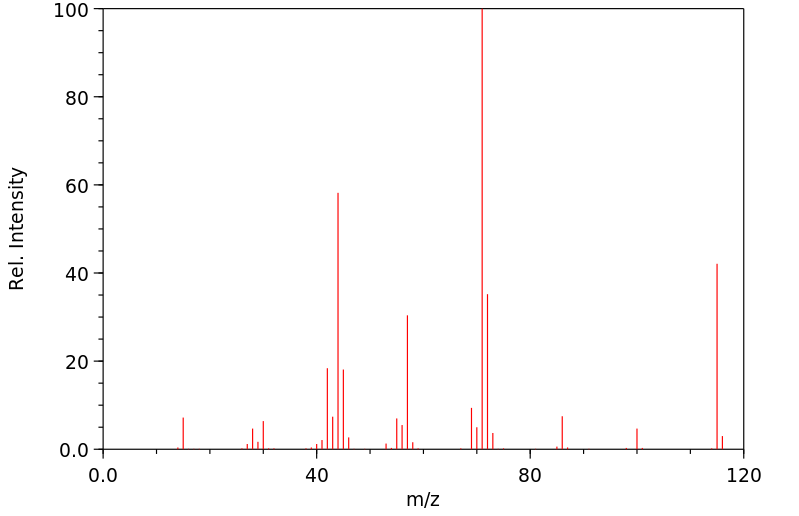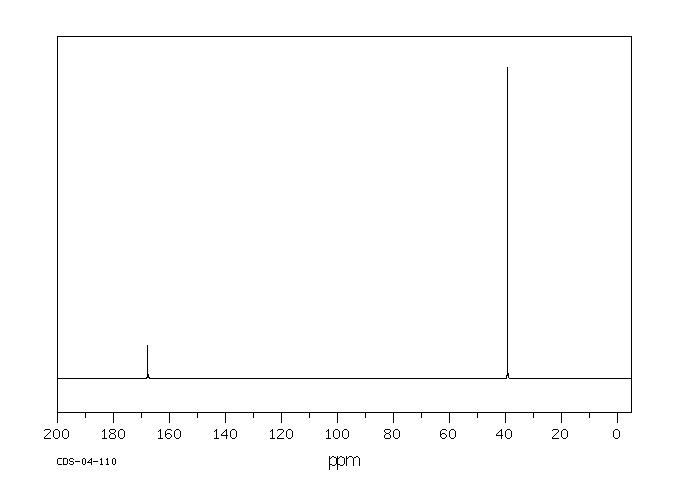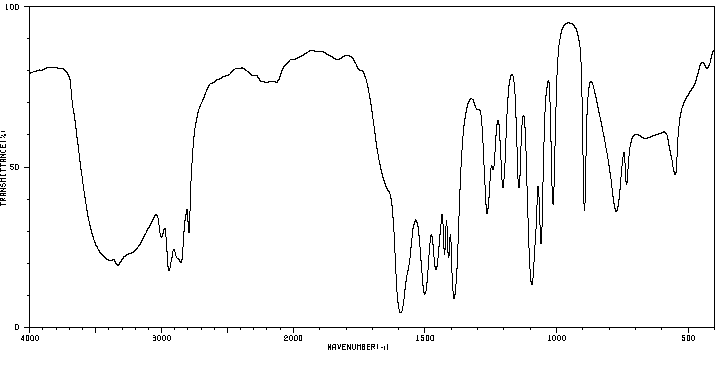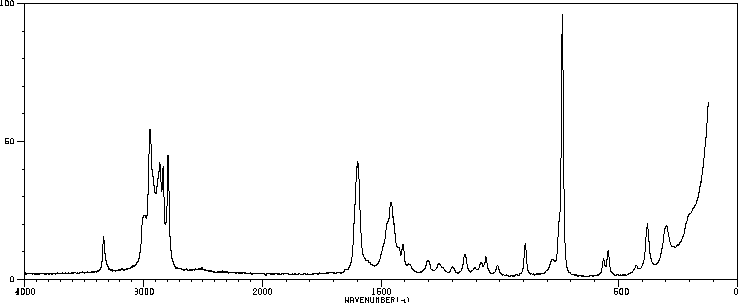| Name: | 1 1 3 3-Tetramethylguanidine 99% (gc) Material Safety Data Sheet |
| Synonym: | Non |
| CAS: | 80-70-6 |
Section 1 - Chemical Product MSDS Name:1 1 3 3-Tetramethylguanidine 99% (gc) Material Safety Data Sheet
Synonym:Non
Section 2 - COMPOSITION, INFORMATION ON INGREDIENTS | CAS# | Chemical Name | content | EINECS# |
| 80-70-6 | 1,1,3,3-Tetramethylguanidine | 99% | 201-302-7 |
Hazard Symbols: C
Risk Phrases: 34
Section 3 - HAZARDS IDENTIFICATION EMERGENCY OVERVIEW
Causes burns.Corrosive.
Potential Health Effects
Eye:
Causes eye burns.
Skin:
Causes skin burns.
Ingestion:
Causes gastrointestinal tract burns.
Inhalation:
Causes chemical burns to the respiratory tract. Inhalation may be fatal as a result of spasm, inflammation, edema of the larynx and bronchi, chemical pneumonitis and pulmonary edema.
Chronic:
Not available.
Section 4 - FIRST AID MEASURES Eyes: Immediately flush eyes with plenty of water for at least 15 minutes, occasionally lifting the upper and lower eyelids. Get medical aid.
Skin:
Get medical aid immediately. Immediately flush skin with plenty of water for at least 15 minutes while removing contaminated clothing and shoes.
Ingestion:
Do not induce vomiting. If victim is conscious and alert, give 2-4 cupfuls of milk or water. Get medical aid immediately.
Inhalation:
Get medical aid immediately. Remove from exposure and move to fresh air immediately. If not breathing, give artificial respiration. If breathing is difficult, give oxygen.
Notes to Physician:
Treat as a caustic agent.
Section 5 - FIRE FIGHTING MEASURES General Information:
As in any fire, wear a self-contained breathing apparatus in pressure-demand, MSHA/NIOSH (approved or equivalent), and full protective gear. Will burn if involved in a fire.
Extinguishing Media:
In case of fire, use water, dry chemical, chemical foam, or alcohol-resistant foam.
Section 6 - ACCIDENTAL RELEASE MEASURES General Information: Use proper personal protective equipment as indicated in Section 8.
Spills/Leaks:
Absorb spill with inert material (e.g. vermiculite, sand or earth), then place in suitable container.
Section 7 - HANDLING and STORAGE Handling:
Use spark-proof tools and explosion proof equipment. Do not breathe dust, vapor, mist, or gas. Do not get in eyes, on skin, or on clothing. Use only in a chemical fume hood.
Storage:
Keep away from sources of ignition. Store in a cool, dry place.
Store in a tightly closed container.
Section 8 - EXPOSURE CONTROLS, PERSONAL PROTECTION Engineering Controls:
Use adequate ventilation to keep airborne concentrations low.
Exposure Limits CAS# 80-70-6: Personal Protective Equipment Eyes: Wear chemical goggles and a face shield if splashing is possible.
Skin:
Wear appropriate protective gloves to prevent skin exposure.
Clothing:
Wear appropriate protective clothing to minimize contact with skin.
Respirators:
Follow the OSHA respirator regulations found in 29 CFR 1910.134 or European Standard EN 149. Use a NIOSH/MSHA or European Standard EN 149 approved respirator if exposure limits are exceeded or if irritation or other symptoms are experienced.
Section 9 - PHYSICAL AND CHEMICAL PROPERTIES Physical State: Liquid
Color: Not available.
Odor: Mild ammoniacal odor
pH: Not available.
Vapor Pressure: .26 hPa @ 25 deg C
Viscosity: mPas 20 deg C
Boiling Point: 160 - 162 deg C @ 760.00mm Hg
Freezing/Melting Point: <-30 deg C
Autoignition Temperature: 350 deg C ( 662.00 deg F)
Flash Point: 60 deg C ( 140.00 deg F)
Explosion Limits, lower: Not available.
Explosion Limits, upper: Not available.
Decomposition Temperature:
Solubility in water: miscible with water
Specific Gravity/Density: .9180g/cm3
Molecular Formula: C5H13N3
Molecular Weight: 115.18
Section 10 - STABILITY AND REACTIVITY Chemical Stability:
Stable at room temperature in closed containers under normal storage and handling conditions.
Conditions to Avoid:
Incompatible materials, ignition sources.
Incompatibilities with Other Materials:
Strong oxidizing agents - strong acids - acid chlorides - acid anhydrides.
Hazardous Decomposition Products:
Nitrogen oxides, carbon monoxide, carbon dioxide.
Hazardous Polymerization: Has not been reported.
Section 11 - TOXICOLOGICAL INFORMATION RTECS#:
CAS# 80-70-6 unlisted.
LD50/LC50:
Not available.
Carcinogenicity:
1,1,3,3-Tetramethylguanidine - Not listed by ACGIH, IARC, or NTP.
Section 12 - ECOLOGICAL INFORMATION
Section 13 - DISPOSAL CONSIDERATIONS Dispose of in a manner consistent with federal, state, and local regulations.
Section 14 - TRANSPORT INFORMATION IATA
Shipping Name: CORROSIVE LIQUID, FLAMMABLE, N.O.S.*
Hazard Class: 8 (3)
UN Number: 2920
Packing Group: II
IMO
Shipping Name: CORROSIVE LIQUID, FLAMMABLE, N.O.S.
Hazard Class: 8 (3)
UN Number: 2920
Packing Group: II
RID/ADR
Shipping Name: CORROSIVE LIQUID, FLAMMABLE, N.O.S.
Hazard Class: 8
UN Number: 2920
Packing group: II
Section 15 - REGULATORY INFORMATION European/International Regulations
European Labeling in Accordance with EC Directives
Hazard Symbols: C
Risk Phrases:
R 34 Causes burns.
Safety Phrases:
S 25 Avoid contact with eyes.
S 36/37/39 Wear suitable protective clothing, gloves
and eye/face protection.
S 45 In case of accident or if you feel unwell, seek
medical advice immediately (show the label where
possible).
WGK (Water Danger/Protection)
CAS# 80-70-6: 2
Canada
CAS# 80-70-6 is listed on Canada's DSL List.
CAS# 80-70-6 is not listed on Canada's Ingredient Disclosure List.
US FEDERAL
TSCA
CAS# 80-70-6 is listed on the TSCA inventory.
SECTION 16 - ADDITIONAL INFORMATION N/A










